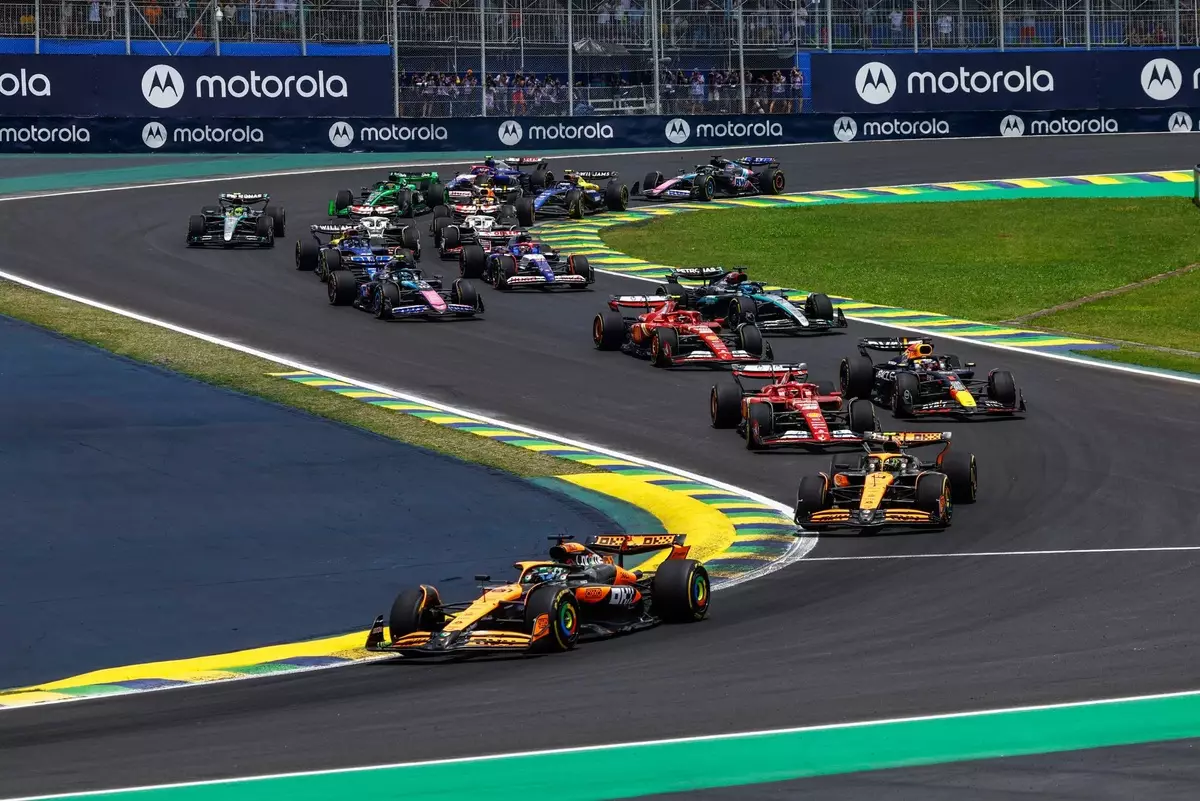As the world of Formula 1 gears up for monumental changes in the coming years, the focus has turned to the aerodynamic testing regulations that will shape the trajectory of competition. With the arrival of revamped turbo hybrid engines and new aerodynamic standards in 2026, teams find themselves at a crossroads: should they commit resources to the current season’s performance or pivot entirely towards developing competitive cars for the impending era? This dilemma has garnered significant attention from industry leaders, including Ferrari’s team principal, Fred Vasseur, who sees the evolving landscape of aerodynamic regulations as a potential “game changer.”
Vasseur’s insight introduces a provocative strategy that may unfold in the next couple of seasons: teams potentially writing off their performance in the 2025 championship to augment their aerodynamic development time for the 2026 regulations. As the global motorsport community prepares for the shift in rules, some teams that do not pose a threat to championship contention could choose to divert their focus towards long-term gains, essentially sacrificing short-term competitiveness. “If you are fighting for something,” Vasseur articulates, “the temptation is to push for the current season, but those teams not in the running might be willing to go all-in on the future project.”
This drastic change in approach reflects a deeper understanding of the evolving scoring systems in F1, where the sliding scale of aerodynamic testing time significantly impacts overall performance. As the stakes rise, it becomes apparent that teams might prioritize their resources to gain a competitive edge in the long term, reshaping traditional rivalries and strategies.
Understanding the intricacies of Formula 1’s Aerodynamic Testing Regulations (ATR) is essential for grasping their potential consequences. The ATR determines the amount of time each team can access wind tunnel facilities and utilize Computational Fluid Dynamics (CFD) based on their constructors’ championship standings. The current system imposes a structured sliding scale, with first-place teams receiving 70% of the baseline allowance and those finishing tenth receiving a generous 115%. This effort aims to promote parity among teams and produce closer grid formations, but Vasseur argues that the ramifications of this system could reach far beyond mid-season dynamics.
The reset frequency, occurring twice yearly after significant races, particularly after the Austrian Grand Prix, introduces a unique opportunity for teams. Those positioned lower in the rankings mid-season could be strategizing to exploit this reset, championing a plan that allocates increased testing resources for the remainder of the year. The dynamics of competition could swiftly alter as teams jockey for position in anticipation of the new regulations.
As teams prepare for this transformative phase, the question looms: what strategies will dominate the landscape as they navigate the tightrope between immediate performance and future potential? Vasseur underscores the reality of this decision-making process. Teams such as Ferrari might face unique pressures, balancing legacy and innovation alongside the need to stay competitive. Vasseur’s comments resonate with broader implications for the sport; the distinct advantage in aerodynamic testing that may emerge could lead to broader disparities across the grid.
Moreover, this strategic realignment raises questions about the sport’s competitive integrity. Will the temptation to abandon the current season to enhance future performance lead to diminished excitement in the short term? As the teams deliberate on their approaches, the entire paddock will undoubtedly experience a paradigm shift, affecting sponsorship, fan engagement, and potentially the very essence of racing.
The intricacies of Formula 1’s shifting aerodynamic testing regulations and the overarching changes coming in 2026 present a compelling narrative for teams, management, and fans alike. As stakeholders assess their strategies, a careful balance must be struck between current competitiveness and future readiness. Vasseur’s perspective not only encapsulates the tension inherent in strategic decision-making but also highlights an exciting era for the sport—one that promises to challenge conventional wisdom and test the adaptability of all involved. The next few seasons may not merely be about races won; they may be about preparing for a future that could redefine what it means to compete at the highest level of motorsport.


Leave a Reply